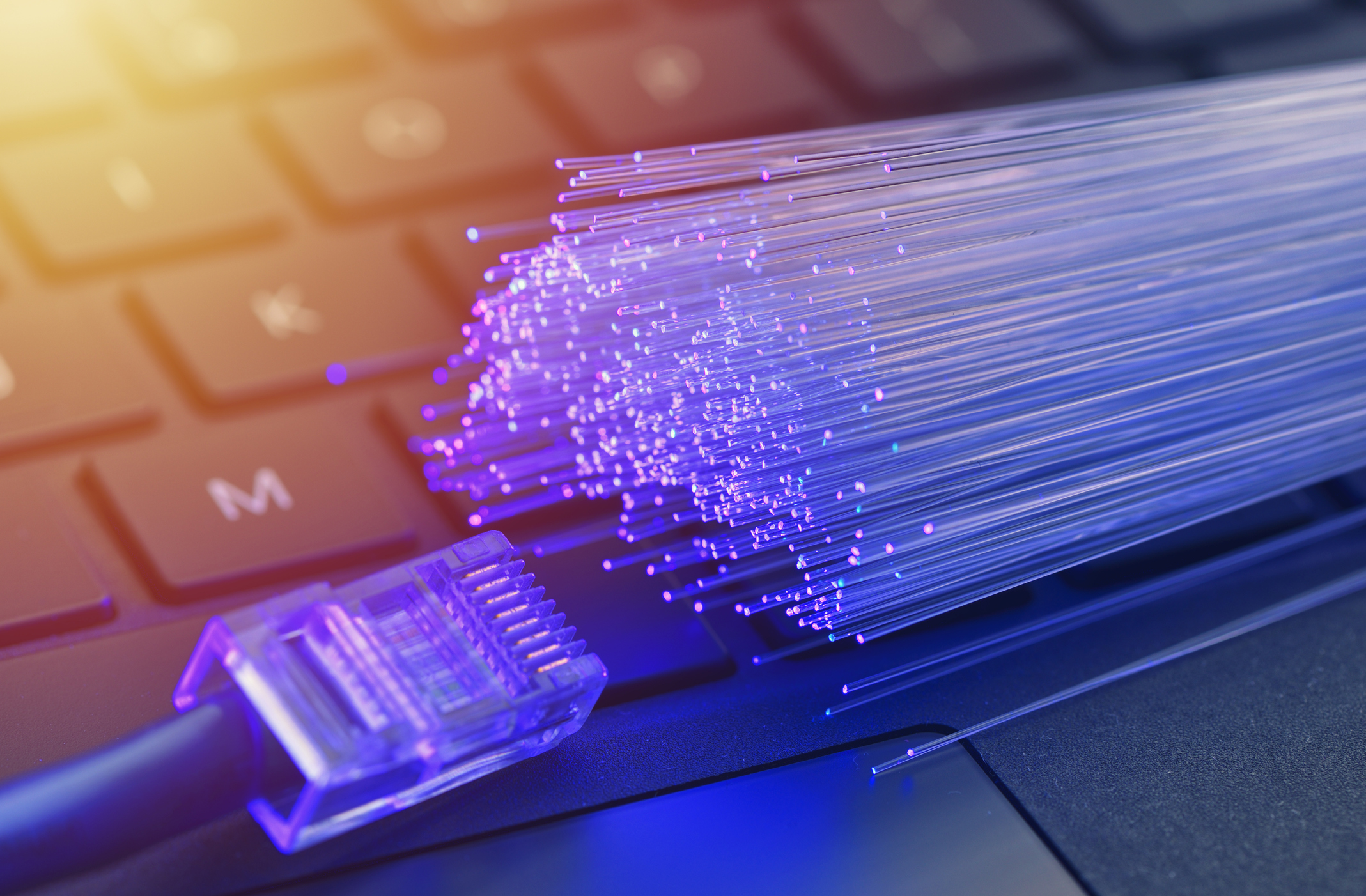
How Do Fibre Optic Cables Work?
29 June 2022
As the world becomes more developed and connected, there have been subsequent increases in data consumption. Research shows that global data consumption rose 30% in 2021, propagated by COVID-19, online videos, and online gaming.
As more and more people have access to the internet, this trend is expected to continue.
There have also been subsequent changes in how data is transmitted. One such change has been seen in the propagation of fibre optics utilisation, which has set the standard for bandwidth usage, data transmission speeds, and distance travelled.
Fibre optic networks are now a global phenomenon and are being applied across multiple industries. In this guide, we’ll introduce you to fibre optics technology and explain how it works. We’ll also cover the pros and cons of using this technology as opposed to conventional tech.
What Is Fibre Optic Cable?
A fibre optic cable is a network cable that contains strands of glass fibres housed in an insulated casing. Also known as optical-fibre cable, this technology offers significantly improved bandwidth and data carrying performance than traditional copper conductor versions.
Optical fibres are about the diameter of hair, and when bundled into a fibre-optic cable, they can transmit data faster and over long distances than other mediums.
Although public interest in fibre optic cables has developed greatly over the last few years, the technology has been around for a while now. First introduced in the 1950s, these cables were applied in endoscopes to enable doctors to examine their patients’ digestive tracts.
In the 1960s, the technology was improved, and engineers began using fibre optics to conduct telephone calls at speeds of up to 200,000 km/second. The potential for using this technology has only increased since then.
Fibre optic cables send and receive information in beams of light. These cables can either be made of glass or plastic fibre. In a single fibre optic cable, different numbers of glass fibres are covered by a glass fibre core. This outer glass fibre core helps protect the inner cladding from destruction.
It is vital to add that fibre optic cables are preferred for data transmission compared to copper wires due to their higher bandwidth and transmission speeds. Fibre optic cables operate based on optical-based technology. These cables are typically used for high-performance and long-distance data networking, such as television, the internet, or telephones.
How Do Fibre Optics Work?
As mentioned, each cable contains very thin glass or plastic strands called optical fibres. Each of these strands can transmit approximately 25,000 telephone calls, meaning some fibre optic cables can handle millions of telephone calls simultaneously.
Once light enters the cables, it bounces back and forth off the sides. Instead of leaking off the glass or plastic strands, each light particle rebounds down the pipe casing in a process known as total internal reflection. For total internal reflection to work, no light should be lost. The surrounding glass cladding ensures that light is reflected inwards and that there is no signal loss.
Although optical fibre technology is standard, there are different types of fibre optic cables.
The Different Types of Fibre Optic Cables Explained
There are two distinct types of fibre optic cables: single-mode and multimode fibre optic cables.
So, what are the main differences?
First, single-mode fibre optic cables have tiny diametral cores where only one light mode can pass through. Due to this, there is a decrease in the number of light reflections formed when the light goes through the core.
This reality enables the light signals to be transmitted further, which is why single-mode fibre optics are used for long-distance and high bandwidth transmissions.
Conversely, multimode fibre optic cables have bigger diametrical cores that allow multiple light modes to pass through. This results in a subsequent increase in the number of light reflections formed when the light goes through the core, meaning more data can be transmitted at a time.
However, the signal quality over long distances is diminished due to the high attenuation and rates created here. Another fundamental point to note is that some thicker fibre optic cables (thicker than single mode and multimode fibres) are used in gastroscopes and fibrescopes.
Gastroscopes are endoscopes used to check for certain medical conditions such as peptic ulcers and gastritis from inside people’s stomachs. A typical gastroscope comprises many optical fibres, with a lamp and eyepiece at the top.
On their part, fibrescopes are used in industrial settings. These tools enable experts to inspect industrial equipment and systems for conditions. Law enforcement personnel also use fibrescopes to check for illegal imports, intelligence, and safety. Again, fibre optics are preferred here due to their high bandwidth and transmission speeds.
What are the Pros of Using Fibre Optic Cables?
The following are some of the benefits associated with fibre optic cabling:
- Capacity: Compared to copper cabling, fibre optic cables are more capable of transmitting data at a higher capacity. For example, you can use 10 Gbps, 40 Gbps, or 100 Gbps rated fibre optics, which would carry more network bandwidth than copper cables with similar widths.
- Security: Fibre optic cables are less prone to meddling than copper wires. When installing a copper cable, you are expected to shield and safeguard it from electromagnetic interference. However, this is not enough, as interference might still happen. With fibre optics, the mere physical properties make them harder to meddle with.
- No need for signal boosters: You don’t need to use signal boosters when installing optical fibre technology. The main reason is that light travels much longer before exhausting its strength.
What are the Cons?
Despite their evident superiority over copper cables, here are a few cons associated with optical fibre technology:
- Expenses: Installing fibre optic cables requires the use of specialized equipment that most people or companies don’t have. The process is also complicated and requires the services of specialized IT support companies.
- The problem of fibre fuses: Sometimes, fibre cables can be destroyed when fibre fuses occur. This happens when excess light passing through the wires comes into contact with a fault in the glass fibre.
- Data transmission is one way: Another disadvantage of fibre optic cabling is that data can only be transmitted one way. Therefore, you may need to install more than one cable if you want two-sided communication.
Conclusion
The use of optical fibre technology has been propagated by these cables’ higher bandwidth and transmission speeds compared to copper wires. This technology can be applied for short-distance and long-distance data transmission across a wide range of industries.
If you are an individual or organization looking to enhance your internet or telephone connectivity, you should consider investing in fibre optics. Contact us today at ICT solutions and get in touch with one of our experts to find the best solution for you and your business.



